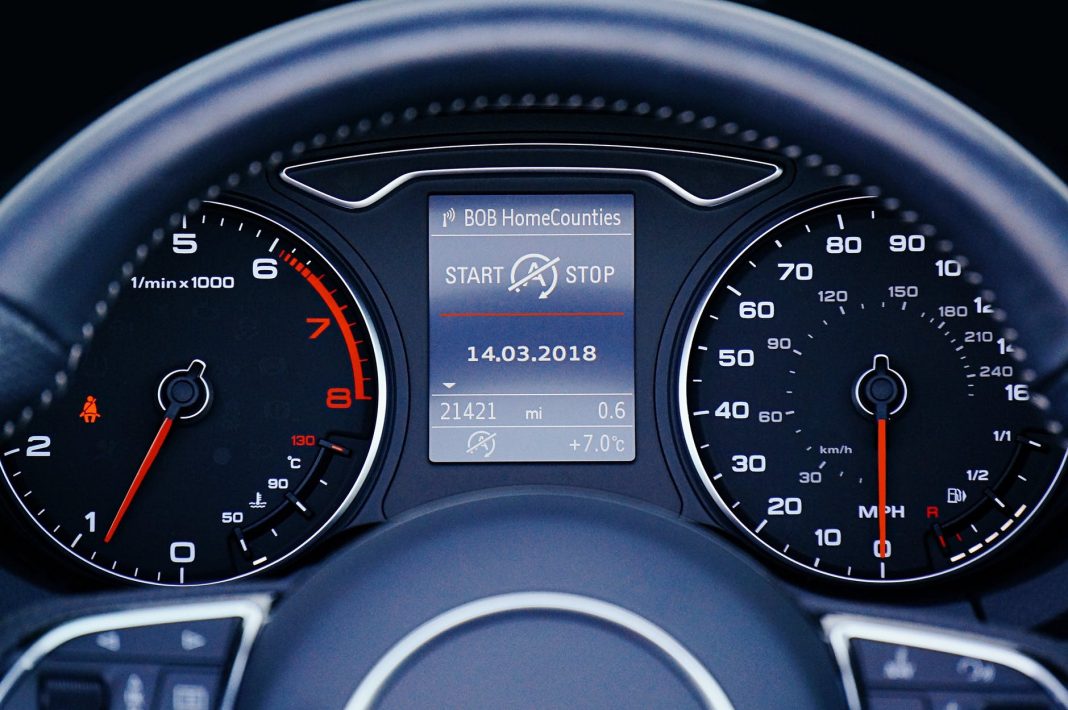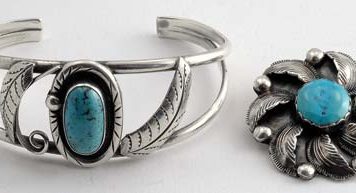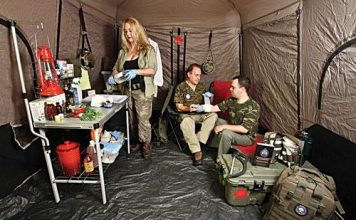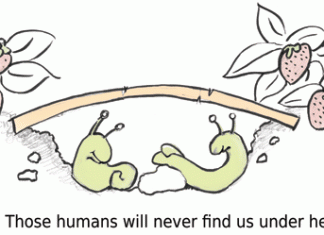| Issue #120 • November/December, 2009 |
Well, it seems the price of oil and gasoline has peaked and plummeted, much like a lot of the rest of the economy these days. One upside to this economic downturn is that there are a lot of bargains to be had, especially when it comes to aftermarket performance car parts. Rather than wait for the prices to go back up, I decided to take advantage of these deals by installing a K&N “FIPK” (Fuel Injection Performance Kit), and a Flowmaster Cat-Back exhaust system on my 2005 Chevrolet 4X4 Crewcab Silverado pickup. Both of these upgrades are street legal, and carry a CARB (California Air Resources Board) number for those of you who have to pass a sniffer test every year.
An engine has often been compared to an air pump. The more air it can ingest and the easier it can expel it, the more efficient it is.
|
So if all these aftermarket add-ons are so great, why doesn’t the factory just build them this way in the first place? Well, that’s where the bean counting department comes in. To keep vehicle prices down and profits high, manufacturers are constantly looking for ways to trim a few cents off of any and all parts they can.
There is also usually a lot more untapped performance in any given vehicle, but that is left out in the name of reliability and to ensure the vehicle will have minimal problems during its factory warranty period. So, the actual production vehicle ends up being over-engineered and under-performing. Plus, most of these aftermarket add-ons are made out of far superior materials than what the factory installs. To be honest, some of them are not cheap, and the upgrades I’ve performed on my vehicle are a good example. Prices will inevitably vary from place to place, but the products I installed cost more than $750.
Being a mechanically handy guy has certainly helped, as installation costs for me were zero, but the items I am installing in this article didn’t require any specialized knowledge or expensive tools. In fact, the installation of the K&N filter setup required no more knowledge or ability than being able to fasten a couple of nuts to a couple of bolts, and being able to tighten three hose clamps. In fact, it was so quick and simple (about 15 minutes worth of simple) that I’ve skipped the installation of it entirely, and have shown only the finished result installed in the vehicle.
|
The greatest advantage of the K&N setup is that you will never have to buy another air filter for the vehicle again. It also traps more dirt and allows more air to flow through it than the factory paper filters. You just clean it, wash it, let it dry, and re-oil it. The filter is made of cotton gauze encased in a wire mesh that is impregnated with a light oil. It comes pre-oiled from the factory, so it is ready to go right out of the box. The re-oiling kit costs $10-12 at any parts store, comes with a cleaning solution and a spray can of filter oil, and is usually good for six to eight cleanings before you need another one.
If you figure that some of the restrictive “stock” filters on vehicles today can cost $20 or more and need to be changed about every 30,000 miles, then the economics of this setup start to make sense. Every time you clean the K&N filter you are saving $20 by not buying another stock filter. K&N recommends you clean and re-oil every 50,000 miles, which stretches a buck even further. The K&N FIPK allows more air to get into the engine faster than the convoluted factory setup, which increases your vehicle’s miles per gallon. The system will eventually pay for itself.
To install the exhaust I headed to one of the neighborhood shops to take advantage of their vehicle lift. The lift certainly makes the job a million times easier, but in a pinch, this is a job which could be tackled on the ground in the driveway. A basic socket and wrench set, and maybe some pry bars are all that is required for the initial installation. Flowmaster recommends that the assembled parts be welded for a more permanent installation and cleaner appearance, but it is not a requirement. Having a shop do just the welding for you is certainly going to be cheaper than doing the entire install, but letting experienced hands do the entire job for you is certainly not going to break the bank, as the entire installation took a little more than an hour from start to finish. I’ve decided to wait on getting the system welded until after I’ve put a few miles on it, to ensure that there are no fit or clearance issues, which would be harder to correct if the system was already welded together.
|
After getting the truck up in the air on the hoist, we started by laying out all the pieces in the same order as was shown in the instructions diagram. It’s best at this point to read the instructions entirely to familiarize yourself with them. After ensuring that all the pieces on the parts list were indeed in the box, we began by removing the two bolts that hold the factory exhaust pipe to the catalytic converter exhaust flange, prying the rubber hangers off the pipes themselves, and removed the entire exhaust assembly from the vehicle in one piece. (It comes all welded together from the factory.) The muffler that the factory installed on this truck is pretty huge, as mufflers go (I’ve seen trash cans smaller!), so it may be easier to sawz-all the pipe just behind the muffler to make removal easier, especially if you’re doing this job on the ground. In my case, the rear axle hanging at full droop on the lift gave us a lot of room to play with.
OK, so now that all the old parts are out, (which took about five minutes), we can move on to installing the new ones. Begin by installing the exhaust pipe which bolts right up to the flange the old one came off of. Slide the rubber hanger onto the metal brackets and you’re good to go. Next, slide the supplied large clamp over the muffler inlet, and slide the muffler over the pipe you just installed. It may take a little finagling to get it seated far enough in to allow the clamp enough meat to bite on. A large rubber mallet and some WD-40 helps a lot with this. Situate the muffler so that it is horizontally level, but leave the clamp loose for now. We’ll tighten everything up once it’s all put together.
|
Support the muffler so that it is in its natural position, and not hanging by its own weight. You may be thinking that the job may be easier if the spare tire under the bed is removed, but leave it alone. You will have no way to determine the pipe clearance with it removed. (It would definitely be a good idea to remove it after the system is installed when you weld it together.) Locate the pieces that come out of the driver’s side outlet of the muffler and install them first. There are two hangers supplied with the kit that need to be installed into existing holes in the frame on either sides of the vehicle. Install them finger tight for now. Once you’ve got all the pipes and clamps fitted together on the driver’s side, install the passenger side pieces.
At this point, you need to double check your fit and clearances. Flowmaster requires the exhaust pipes to have a minimum of ¾” clearance away from anything else. Snug down the clamps loosely where you want them to go, but keep in mind that you will need to get a socket on them when you install them. You will need to twist and turn the pipes to orient them correctly. Now is a good time to tighten the muffler inlet clamp so the muffler remains in place. Start at the outlet pipes and work your way back.
At this point you have a decision to make. Do you want the exhaust tips to go straight out the back, under the bumper, or do you want them to be angled out the side behind the rear wheels? If you do a lot of towing you may want them to be angled, just so that all the exhaust is not exiting under the trailer, especially if you’re hauling animals, and you’re not getting fumed out when connecting or disconnecting the trailer. Flowmaster provides the parts to do this either way, so you will have parts left over when you’re finished. Decide which way you want to go, then install the necessary pieces. Make sure everything is where it needs to be, tighten up all the clamps and hangers, install the nice chrome tips from the kit, and you’re done.
|
Let the vehicle down and stick your head underneath to check your clearances again. Give the rear suspension a few good bounces and listen for any noises. If you’re satisfied with the way everything looks, then fire up the motor and head out for a test drive. (Now is a good time to just stand there and listen to how cool the exhaust sounds.) Turn the radio off, close the windows, and listen for any rattles, squeaks, banging, or rubbing noises while driving slowly. (Any rattles, squeaks, banging, or rubbing noises that were already there don’t count.) If all is well, you should be good to go. I had to trim a small amount off the hanger on the cat-pipe that was tapping against the frame, but other than that, everything was fine.
There is a nice 30-mile stretch of open road near me that I drive often, and up until this point, my MPG on this road was averaging about 16.5. I set the cruise control like I always do on this stretch and made a round trip of about 50 miles. After I pulled into the driveway, I checked the MPG meter on my dash and was pretty well satisfied to see it reading 18.6 MPG.
I went out again and opened ‘er up, and could definitely feel an increase in power in the seat of the pants. The truck seemed to run at about 200 RPMs lower when cruising than it used to as well. The transmission also downshifted less and up-shifted quicker on hills that it did before.
|
Since this test drive, I went on a 250 mile round trip from my home to Glenwood, New Mexico, and back through some fairly steep and mountainous terrain, with the trip home being the uphill portion. Upon arriving, I was pleasantly surprised to see that the truck had averaged 20.1 MPG for the entire trip, quite an improvement over the 16 and change I had averaged before.
While these upgrades were a bit pricey, they will eventually pay for themselves, especially if the price of gas starts creeping back up. The interior noise of the two systems is about the same as it was prior to the installation, but now the truck breathes a whole lot easier and efficiently, and sounds real cool on the outside as wella slight mellow rumble without any harshness, which I know most wives will appreciate. All in all, I’m pretty satisfied with the ease of both of these installations and the quality of the pieces. I’m convinced that doing both of these upgrades together has resulted in much better performance and mileage gains than if I just did one or the other alone.
You can find the products K&N offers for your vehicle by logging on at www.knfilters.com/
If you’re interested in performing an exhaust upgrade such as this on your vehicle, you can see what’s available at www.flowmastermufflers.com
A shout out of thanks to Aaron and Ryan at Ashton’s Mechanical Repairs in St. Johns, Arizona for helping with this installation on short notice, and for their excellent work.
Len Torney is an ASE Certified Automotive Technician, Service Advisor, and Parts Specialist with more than 20 years experience in the automotive repair industry. He and his wife, Elizabeth, and two children, Nathan and Stephanie, own 40 acres in northern Arizona where they are getting ready to build their home.





















I didn’t realize that you could get an exhaust pipe that faces different ways. As you mentioned, if you do a lot of towing, especially animals, it is a good idea to get an exhaust that points out to the side. My dad tows his horses around often. I will have to check his truck, and see which way the exhaust goes.